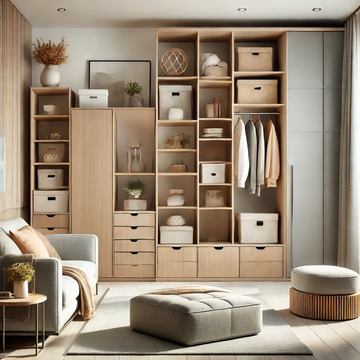Why Safety Gear is Crucial
Ever been in a workplace where you feel like something’s missing, and it’s not just the coffee machine? Safety gear in industrial settings isn’t just a tick on a compliance checklist—it’s the frontline defence that keeps your team safe from injuries and accidents. Imagine working without the proper gear: it’s like playing a high-stakes game without a safety net. Trust me, the right equipment can make all the difference between a near miss and a serious incident.
So, let’s dive into the essential protective equipment that should be part of every industrial workspace. We’ll cover everything from head to toe, and hopefully, make your job a bit safer and a lot more comfortable.
-
Personal Protective Equipment (PPE)
Head Protection
Let’s start with the basics: hard hats. If you’ve ever seen a construction site, you know how important these are. A decent hard hat can protect you from falling objects, bumps, and even electrical hazards. And don’t forget about additional head protection for specific risks—like helmets with face shields for metalwork or welding.
Eye and Face Protection
If you’ve ever had dust or sparks fly into your eyes, you’ll know the value of safety glasses and goggles. They come in different types depending on the risk—anti-fog, tinted, or with side shields. And for those times when you need extra protection, face shields are a lifesaver, keeping your entire face shielded from hazardous splashes or debris.
Hearing Protection
Industrial noise isn’t just annoying—it can be harmful. Earplugs and earmuffs are your go-to options here. Earplugs are small and easy to carry, while earmuffs provide more coverage and can be more comfortable for extended wear. Pay attention to the noise reduction ratings (NRR) to ensure you’re getting the protection you need.
Respiratory Protection
Dust, fumes, and gases—industrial environments can be full of airborne hazards. Respirators come in various forms: dust masks for light protection, half-masks for moderate exposure, and full-face masks for more serious risks. Choose the right type based on the specific hazards in your workspace.
Hand Protection
Gloves are more than just a fashion statement; they’re essential for protecting your hands from cuts, burns, and chemical exposure. With so many materials—leather, nitrile, latex—each designed for different tasks, it’s crucial to pick the right glove for the job. And let’s be honest, there’s nothing worse than ripping a glove and realising it was the last pair!
Foot Protection
Safety boots aren’t just about protecting your feet from falling objects; they’re also about providing comfort and support for long hours on your feet. Look for boots with steel toes, slip-resistant soles, and good arch support. Special footwear might be necessary for specific environments, like electrically hazardous areas.
Body Protection
Work suits and coveralls protect your clothing and skin from hazardous materials and extreme temperatures. Aprons and additional protective clothing can provide extra protection depending on the task. It’s like having a suit of armour tailored to your job!
-
Fall Protection Equipment
Harnesses
If you’re working at heights, harnesses are non-negotiable. Full-body harnesses offer the most protection, spreading the force of a fall across your body. Make sure it fits well and adjust it properly—after all, you don’t want to find out it’s not right when it’s too late.
Lanyards and Lifelines
Lanyards and lifelines help secure you while working at heights. Shock-absorbing lanyards reduce the force of a fall, while retractable lifelines offer flexibility and ease of movement. Check the quality and functionality regularly to ensure they’re in top shape.
Anchor Points
Secure anchor points are crucial for your fall protection system. They need to be strong enough to hold you in case of a fall. Regular inspection and maintenance of these points can prevent accidents and ensure safety.
-
Fire and Emergency Protection
Fire Extinguishers
Fire extinguishers are your first line of defence against workplace fires. There are different types—water, foam, dry powder, and CO2—each suited for different kinds of fires. Make sure you have the right type for your workplace and keep it serviced and ready to go.
Emergency Kits
An emergency kit should be more than just a box of band-aids. Include first aid supplies, emergency contact numbers, and any specific items needed for your industry. The kit should be easily accessible and regularly updated.
-
Ergonomic and Additional Protective Gear
Ergonomic Supports
Long hours on your feet or repetitive tasks can take a toll. Ergonomic supports like back supports and knee pads can reduce strain and prevent injuries. They’re like a little extra comfort that can make a big difference in your day-to-day work.
High-Visibility Clothing
If you work in low-light conditions or around moving machinery, high-visibility clothing is a must. It ensures you’re seen and avoids accidents. Look for clothing that meets the visibility standards required for your industry.
-
Maintenance and Training
Regular Inspection
Your safety gear isn’t something you use once and forget about. Regularly inspect it for damage, wear, and tear. Replace anything that’s past its prime to keep yourself safe.
Employee Training
Knowing how to use safety gear properly is just as important as having it. Regular training on the use and maintenance of protective equipment can ensure everyone knows how to stay safe and use their gear effectively.
Ready to Gear Up?
So there you have it—a rundown of the essential safety gear that can make a real difference in your industrial workspace. Whether you’re on a construction site or working in a factory, investing in and properly using the right protective equipment is key to staying safe. Take the time to choose the right gear and make sure it’s well-maintained. Your future self will thank you for it!




